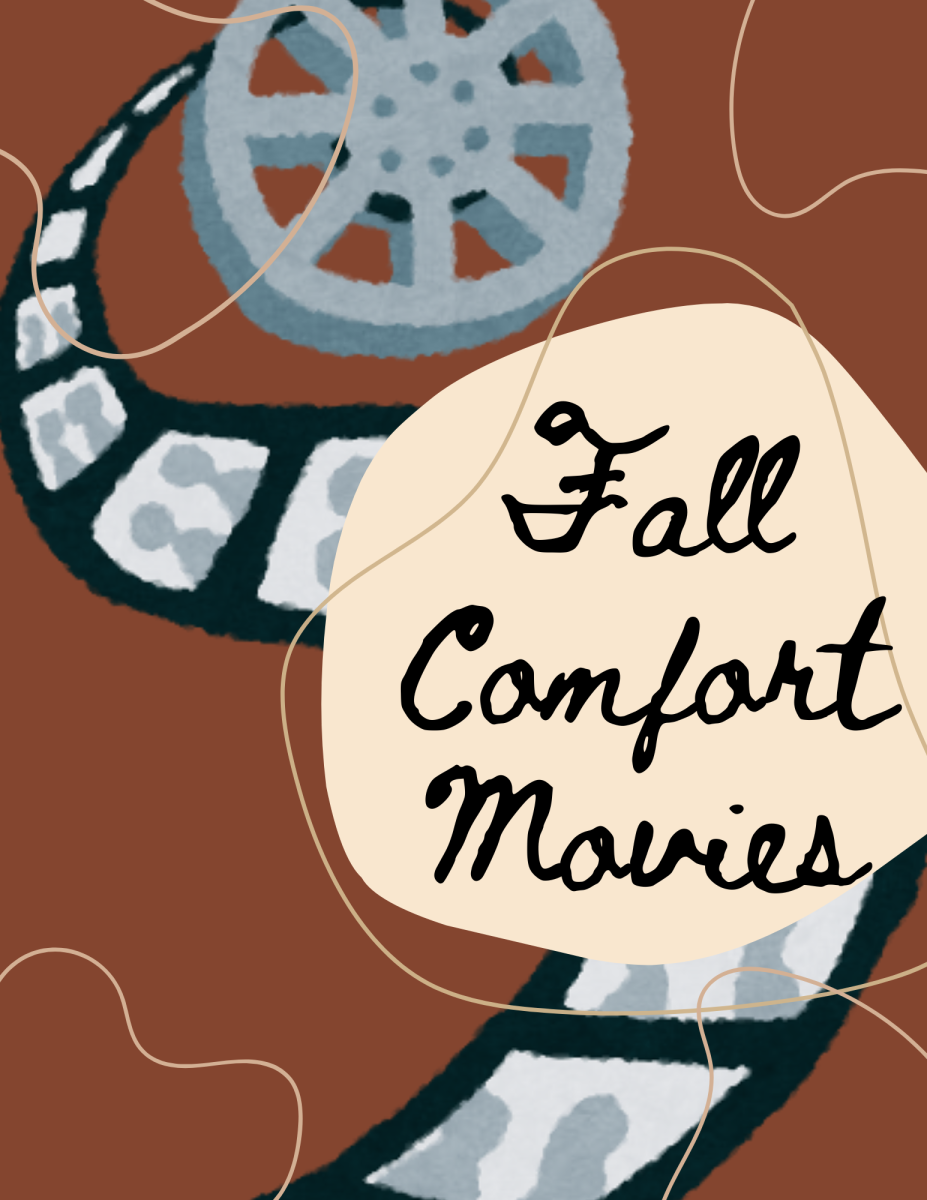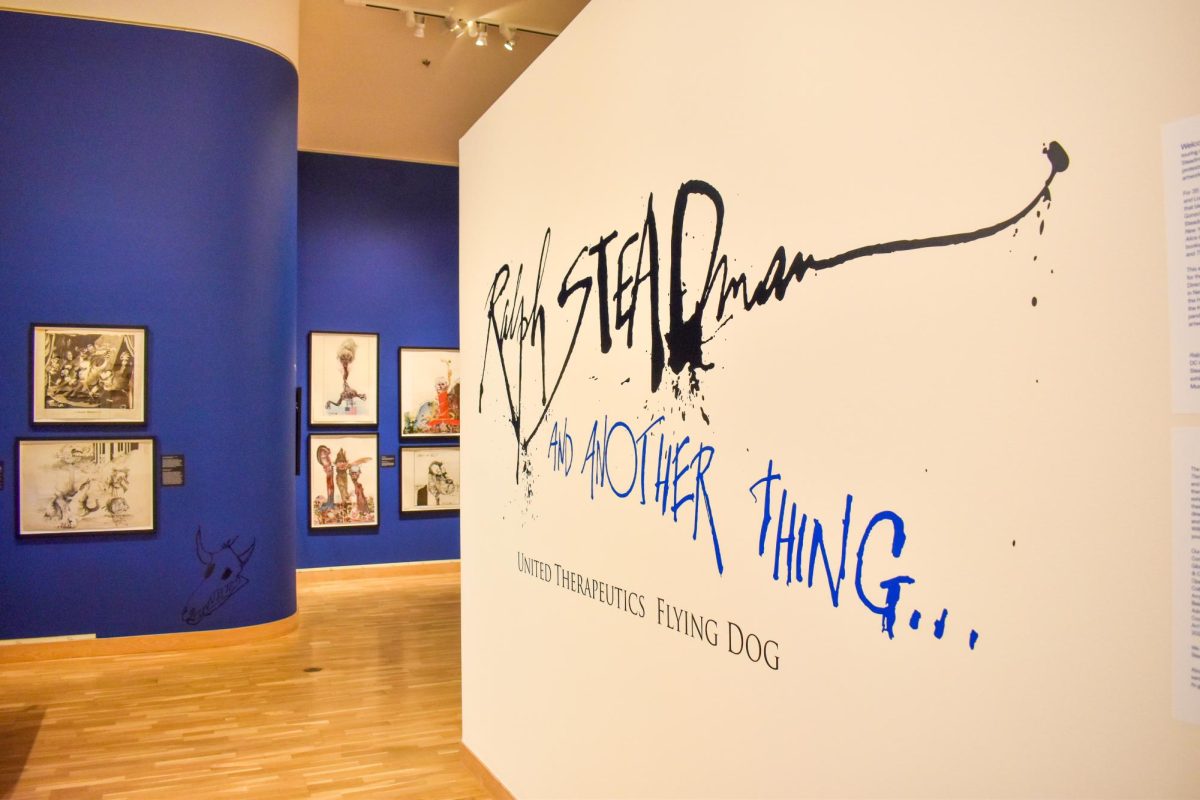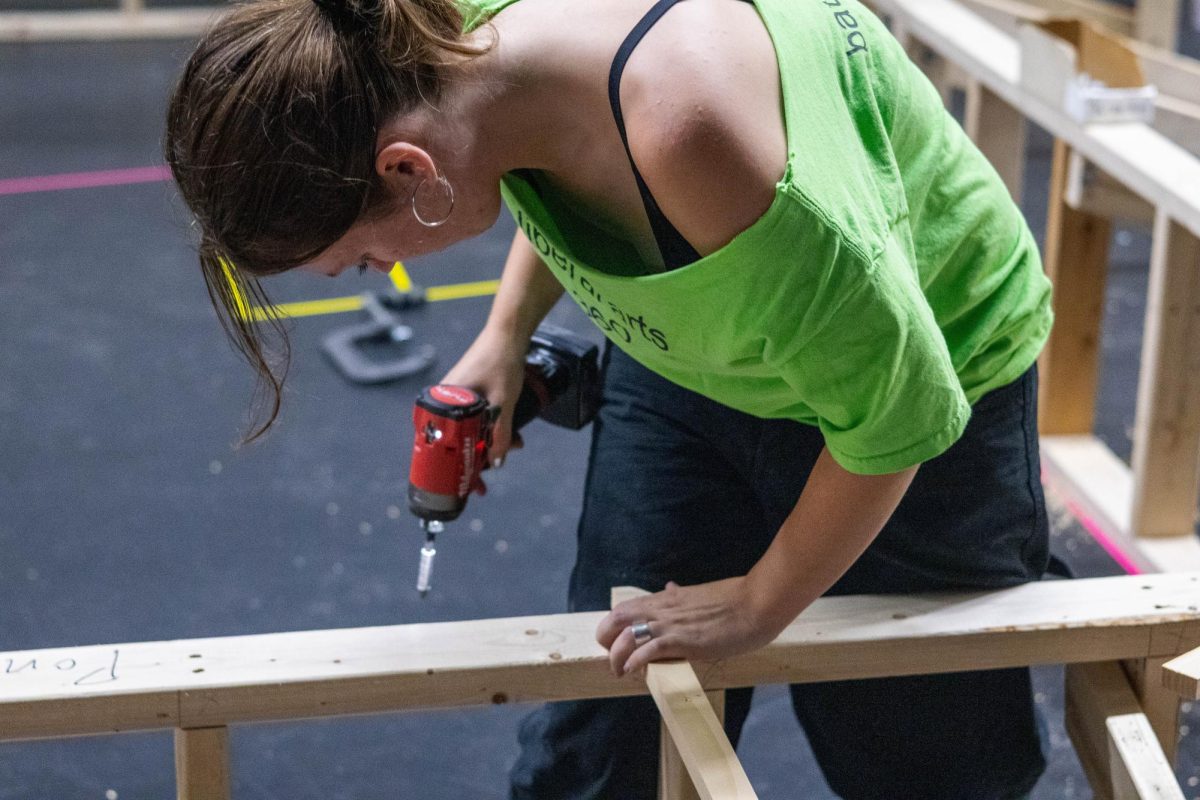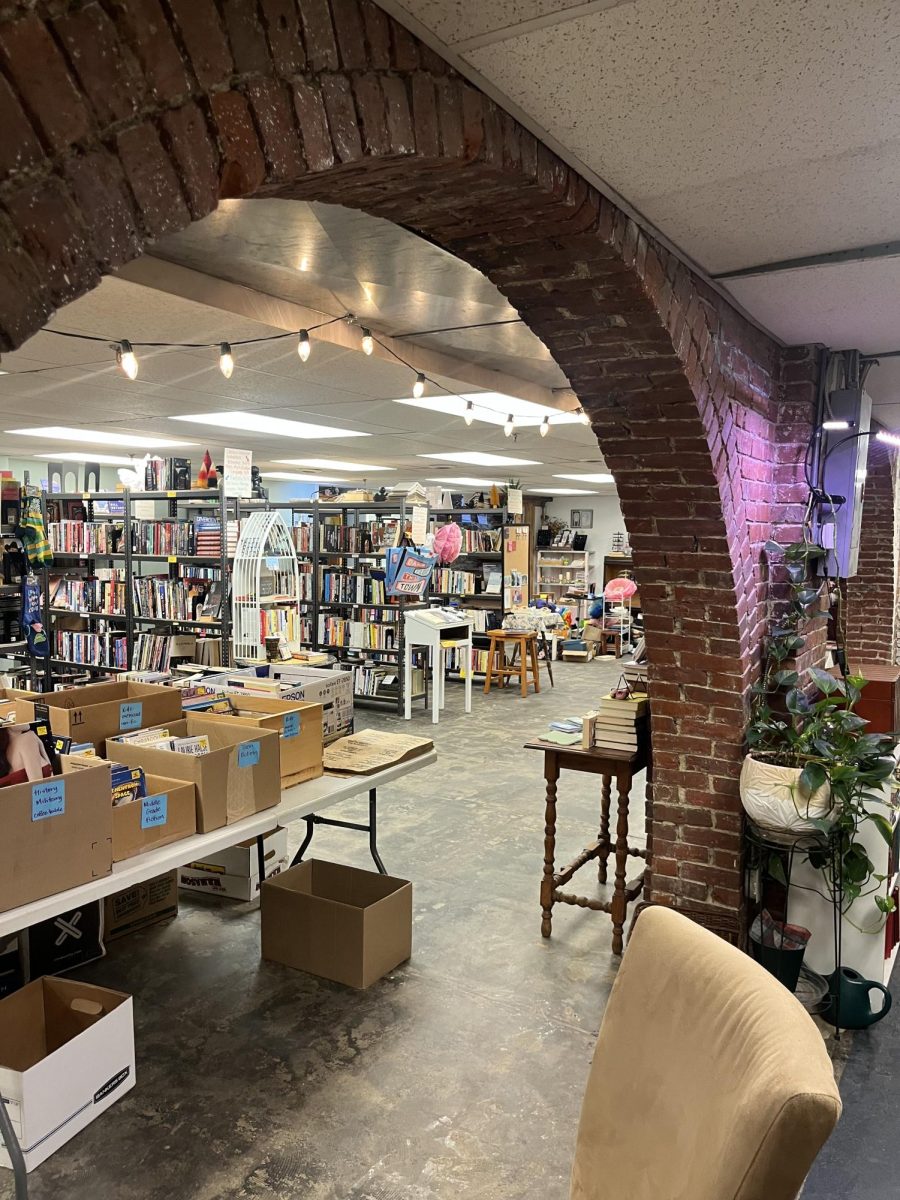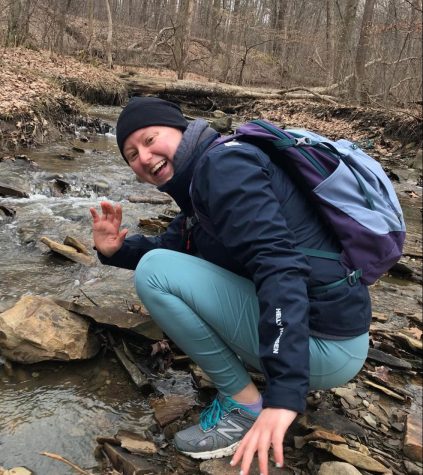If you ask Cate Pope ’25 to describe the dance she choreographed this fall, she’ll be able to sum it up in a few words. Adrift explores how matter “changes states of being.” Dancers embody a glacier as it melts and re-freezes, representing “the cyclical nature of water,” Pope said.
But ask Pope and her dancers what the experience has really been about, and you will get very different answers. For Bryn Murray ’25, who dances in the piece, the process was about “joy.” She told the Theater and Dance Department that during rehearsals, “we have all become great friends.” The cast was boisterous in that friendship — “we were chaotic, we were loud,” said dancer May Whelan ’25 — even as they worked hard to perfect the dance. For Pope herself, rehearsals were a “time warp” of joy and love.
Such experiences are uniquely possible at Bates, where dancers are coworkers, collaborators, best friends and roommates all at once. They come to rehearsals straight from midterm exams, thesis meetings and piles of homework, in search of a place where they can “laugh, cry, challenge each other and most importantly feel that we are a part of something bigger than ourselves,” Whelan said.
This year, every single piece in the Fall Dance Concert showcased the strong bonds between dancers, forged through months of community and collaboration, that Pope’s cast described. Each of the four dances was a thesis, choreographed or performed by senior students as the culmination of a semester of research and four years of dance education. Dance is “ephemera — once it happens, it’s gone,” wrote Artistic Director Brian J. Evans in the concert program, and it struck me that these were theses alive and breathing before their writers more than any other student’s thesis might live in a moment.
The show opened on Friday and will run for two more performances: Saturday Nov. 16 at 5 p.m. and Sunday Nov. 17 at 2 p.m. in Schaeffer Theater.
The concert began with The World Slowed Down as I Was Moving by Sarah Senator ’25, performed by Scarlett Downes ’28, Hazel Krinsky ’27, Sophia Levine ’27, Kiara McGinness ’27, Sophia Miller ’27, MK Mylod ’27, Senator and Olivia Svallin ’28.
Senator told The Student that their piece embodies a sense of “haziness and numbness, as if you’re moving through the world without ever really letting things penetrate a metaphorical bubble around you.” Indeed, the dancers — in muted, flowing clothes — covered the stage as if it were fog, often mirroring each other in pairs so fluid they looked like shadows of each other.
Senator’s music included several long moments of silence, during which we could hear bodies landing on the floor, feet squeaking through a turn and costumes swishing in the air: the sound of dancers dancing. These moments were a reminder of where we were and what we were watching, a moment of clarity amidst the haziness. The effect was breathtaking.
Getting to that point wasn’t easy. Senator said they struggled with “lots of trial and error and a pretty frustrating start of a sort of ‘writer’s block.’” But with their dancers, they “worked to create movement phrases” that germinated into a cohesive final product. “There is no way I could have created such a work without the input from my incredible dancers,” Senator said. “They were so integral to this process.”
Lydia Frew ’25 took the stage next to perform her solo Sweet Charity Suite, choreographed with Bates faculty Kate Marchessault as Frew focused on the performance. Frew told The Student that her thesis research is about the unique function of dance within musical theater, and how dance can be “utilized as a mode of storytelling and world building.”
As the only dancer in her piece, Frew found it “challenging as one body to feel as though I am fully utilizing and energizing the large stage,” she said. But on Friday night, she filled the space impressively, with a visible confidence as she moved between diverse styles of musical theater dance, from her jazzy opening to softer moments.
Frew is technically an impressive dancer, with beautiful leg extensions and strong turns. Notable in her dance is the focus and precision of her hands and wrists, which Frew said was inspired by Bob Fosse. But even as she focused on the technical elements, it was clear she was having fun onstage. After all, she said, musical theater is about storytelling, but it’s also about “joy and entertainment.”
Next up was Adrift, Pope’s piece, performed by seven dancers: Sadie Chesloff ’28, Murray, Ruslan Peredelskyi ’25, Pope, Maia Seigerman ’26, Svallin and Whelan. They danced to a cover of Aurora’s song “Runaway” performed by Pope on cello and her twin sister Jane playing piano and violin.
Pope’s dance was about water, and at times involved sounds of cracking ice, pounding waves and screeching seagulls — appropriate for a choreographer who grew up on a Maine island and had her student lobster license by age 12. The dance was particularly fluid, defined by a deep trust between dancers: at multiple points the entire cast held on to each other, leaning on and supporting each other to create the image of ice cracking, or a wave swelling, or a sea roiling. Pope made striking use of a large piece of fabric, which billowed to become a dancer itself in one of the most dramatic moments of the entire concert.
The concert finished with Am I Supposed to Know?, choreographed by Jane Drumm ’25 and performed by Bella Daly ’27, Drumm, Miller, Aliza Savin ’27, Ellie Stevenson ’27 and Lucy Whitelam ’26. The piece is interested in “self-knowledge and body ethics and how the way you can move informs the way you can know yourself, and also how the way you know yourself informs the way that you move,” Drumm told The Student.
Drumm’s work was vast, at times dystopic and at times carefree; I marveled at how her dancers remembered all the steps. Much of the dance included fast and fluid movement, but there were moments of tender slowness too: at one point in the dance Drumm sat centerstage with her back to the audience, watching the beauty unfold in front of her. Her watching felt like beauty in itself, the gentle love of attention.
Drumm emphasized collaboration in her thesis. Her dancers worked together to devise the dance, a relationship that was obvious in how comfortable their partner work was. But Drumm also saw the piece as a dialogue between the performers and the viewers.
“I want the audience to just bring themselves to the work,” she said. “What they get out of it may be entirely different from what I get out of it, versus one of my cast members, versus us as a whole cast … Everybody sees a body on a stage very differently, and I’m very interested in that reality.”
At the end of the night, dancers from all different pieces joined hands to take a bow and soak up applause from a theater packed with classmates, professors, family and friends. Frew, who performed the musical theater solo, told The Student that this feeling of community is at the heart of what it means for her to dance.
“Musical theater dance feels like a true conversation between the performers and the audience,” she said.
“It almost feels incomplete without this exchange of energy.”




